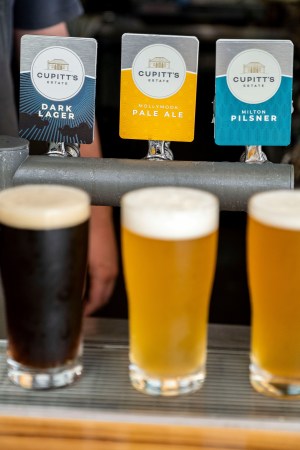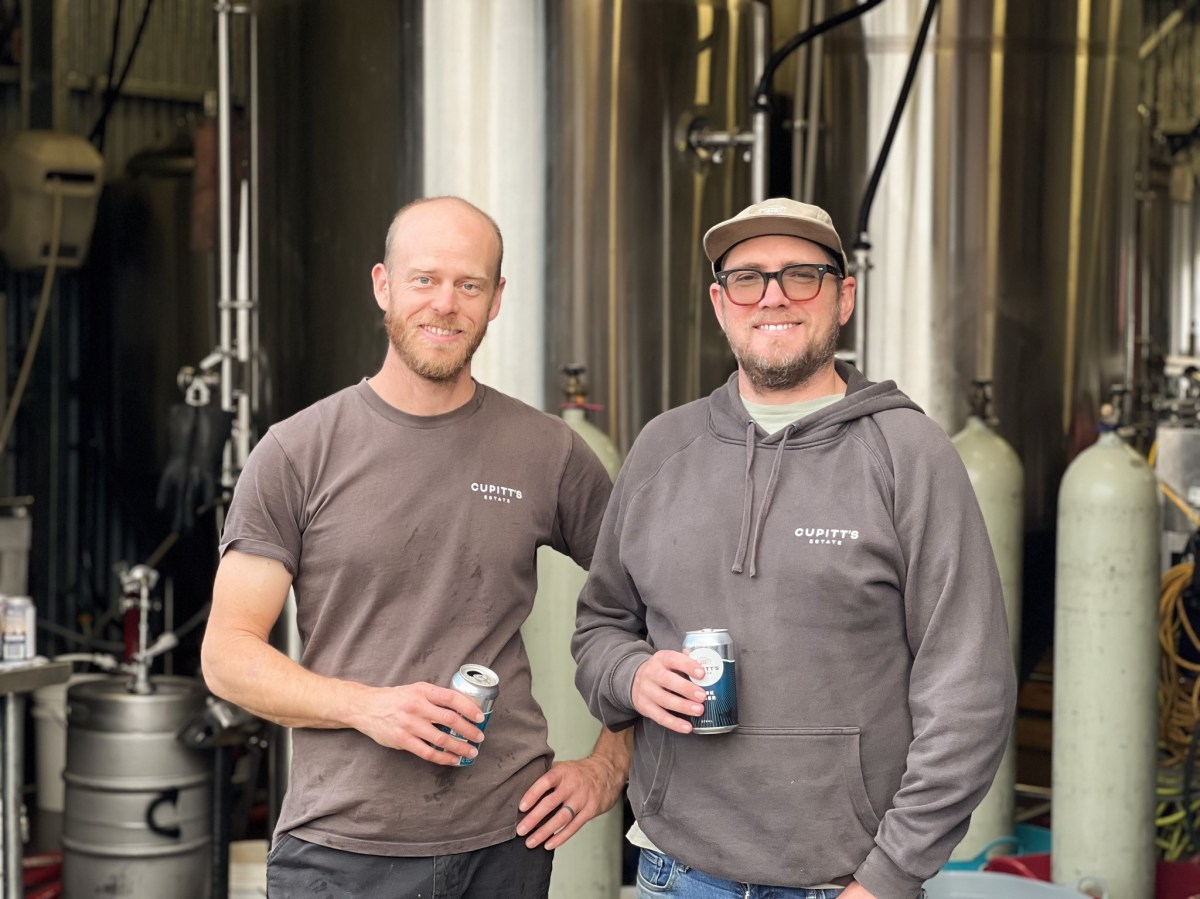In 2014, the brewing industry was a very different place. From increased craft beer exposure in the mainstream to the rate at which new breweries were popping up, it was a positive time to be a part of the rapidly growing industry, and among the many breweries to open their doors was Cupitt’s Estate Brewery.
Now, as the brewery celebrates its 10th birthday, Cupitt’s Estate Brewery Founder Wally Cupitt says it all started with a love for beer and home brewing, inspired by a trip he took through Europe in 2008 with his brother – a passion project that quickly became much more.
“What began as a hobby grew into something bigger, and eventually, we got the chance to open our little brewery here at Cupitt’s. It’s wild to think it’s been 10 years – I’m so proud we’ve kept at it all this time.”
Not long after Cupitt’s Estate Brewery was founded, Head Brewer Liam Jackson joined the team in 2016, taking what was once an experiment in small batch brewing and transforming it into an award-winning business and an essential part of Cupitt’s Estate, which also includes a winery, farm and restaurant.
“What drew me to Cupitt’s Estate initially was the location. I was ready to leave Sydney, and Cupitt’s was already on my radar. I liked the variety of what Cupitt’s did, and thus the prospect of collaboration, and also the genuine nature of the family-owned business that it is,” he recalls.
“Fast forward to 2024, and Cupitt’s is now a cornerstone of the South Coast beer scene and one of the first pioneers of craft beer in the area. Our area has amazing natural beauty, from the beaches to the Budawang Ranges. We like to brew beers that go well with the South Coast climate and lifestyle.”
For Cupitt’s Estate Brewery, it’s always been about more than just the beer. The brewery takes much of its inspiration from the landscape and community that surround it, and this is reflected in the core range.
“It’s a business rooted in a love for land and local environment with local favs Milton Lager, Ulladulla IPA, and Mollymook Pale Ale, all inspired by the South Coast,” added Jackson.
The spirit of Cupitt’s Estate Brewery
A decade since opening the brewery, Cupitt says a lot has changed.
“The last decade has seen an explosion of new breweries on the scene all around Australia. This is a great thing, but the increased competition has led to tougher survival conditions.
“Quality has improved, and the beer consumer is more discerning. It’s no longer good enough just to be ‘craft’; the beer also needs to be consistently good.”
Over the course of 10 years, the team have learnt a lot along the way. They still focus on brewing consistent beers that they’re proud of every time, while also balancing consumer demands with their own interests.

Since taking the reins, Jackson has perfected the core range and pushed the boundaries of beer with new experimental flavours. Staying true to the spirit of the brewery, he says experimentation and diversity is still one of its strongest suits.
“I tell people that we do it all down here on the South Coast, and we do it all well,” he stated.
“Wally and Tom have a strong love of classic beer styles, which I echo. Over the years I’d say our focus has mostly been on classics, be they old or newer ones, but that hasn’t stopped us from playing around with left-field beers, provided we feel that we’re still making a beer that is in balance, with good character.”
Ready to embark on the next decade of Cupitt’s Estate Brewery, Cupitt says: “I think for us to be brewing beer with the same passion in 10 years’ time would be amazing. We are investing in our brewhouse with a focus on quality and consistency over quantity. We don’t plan on getting much bigger, but we do want to build our distribution on the South Coast and dip our toes into Sydney, without getting too big and losing sight of the original dream.”
And it wouldn’t be a milestone occasion without the release of a celebratory beer, with Cupitt’s Estate Anniversary XPA now available at the bar, keg only, for a limited time.
Jackson told Beer & Brewer: “To us, it’s the direction we feel the pale ale has gone in recent years – less bitterness, less caramel malt, but a brighter, fruit-forward hop profile. Simple enough to satisfy the masses, but with enough going on to also satisfy the pointy end of beer drinkers.”

